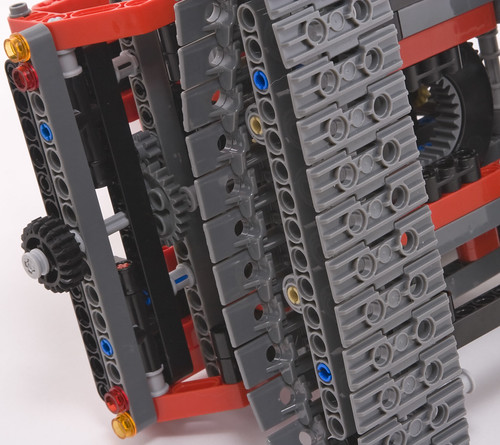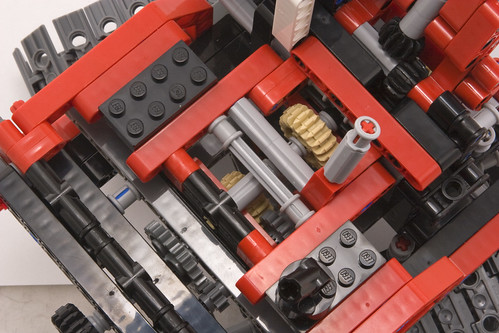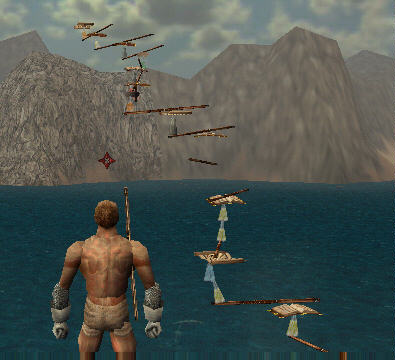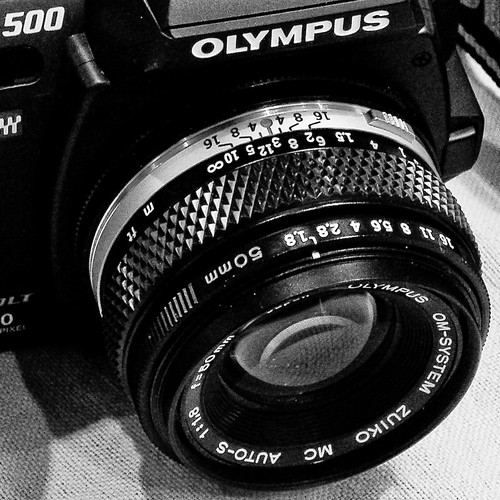
Picture credit: Conlawprof
A reader asks:
Simple, maybe stupid question. We had an Olympus OM-10 which broke down, and some good lenses and stuff which didn't. Please, do OM-10 lenses fit on modern Olympus digital cameras? I asked Olympus but they didn't answer.
Patrick
In brief: Yes, they do. Just buy an OM-System-to-Four-Thirds adapter ring and away you go. Olympus make their own adapter, and there are cheap Chinese ones that're probably just as good, since there's no glass in there.
EBay's full of adapters for popular camera and lens types, but there are far fewer Four Thirds cameras out there than Canons or Nikons, so there only seem to be a couple of OM-to-Four-Thirds adapters on eBay at the moment. I wouldn't be worried at all about buying one on eBay for $40 delivered rather than from Olympus for $100, though; when there's no glass in the adapter, it's hard to get it wrong.
Olympus have a list of recommended lenses for use with the adapter. Other lenses should also work, but may lose a little quality.
The reason for this is that film responds in pretty much exactly the same way regardless of the angle from which light hits it - well, as far as SLR-camera applications go, anyway. Digital sensors, on the other hand, have their own array of tiny "microlenses" over the actual sensor pixels, not to mention protective glass and anti-aliasing filters on top of the microlenses. This stuff does not respond the same to light coming at an angle as it does to light coming straight at it - think of looking at an LCD monitor from an angle, versus looking at a CRT.
So for best results on digital cameras, you need lenses that're as close as possible to being "telecentric", which means the light coming out of the back of the lens is lined up, as much as possible, with the axis of the optical components.
All of the standard Four Thirds lenses are pretty telecentric. OM System lenses aren't so much, because they didn't need to be to work fine with film.
Olympus have a page about this issue, too.
(Telecentricity may be less of a problem as digital sensors evolve - see this page for some speculation.)
Worrying about telecentricity is a bit nit-picky, particularly because the part of the image circle where the rays from any lens are likely to be least perpendicular to the sensor are around the edge, which consumer digital cameras with their "APS"-sized sensors can't even see.
The down side of this is that an APS-sensor camera can only see about two-thirds of the image a "full frame" sensor or 35mm film frame would capture with the same lens. This means all of your lenses appear more telephoto, and you need a serious bug-eyed-monster lens to get really wide-angle photos. The up side is that, even if you don't care about telecentricity, most lenses store their problems around the outside of the image circle. Vignetting, chromatic aberration, softness; all are worst around the edges, which simply aren't seen at all by an APS-sensor DSLR using 35mm-film lenses.
The Olympus/Kodak Four Thirds system was actually purpose-built around these APS-sized sensors, which is why its lenses and cameras are smaller and lighter than those for other big-brand DSLRs.
(The OM System cameras and lenses were small and light compared with the competition too, though that was because of ingenious engineering rather than just having smaller film.)
"Mainstream" Canon and Nikon (and Sigma, for that matter) DSLRs can have full-35mm-frame-sized sensors, but the affordable models only actually have the smaller APS size. So, for those cameras, the lenses and bodies are bigger than they need to be. You can get lenses that only work (well, only work properly, at least) with APS sensors (Canon's EF-S line, for instance). But most mainstream DSLR lenses, and all of the really high-quality Canon and Nikon ones, still throw a 35mm-sized circle of light into the camera, even if only the APS-rectangle middle of it is being caught by the sensor.
The critical issue for putting a lens made for one type of camera on another one - no matter what company makes the camera and the lens - is how far from the back of the lens the film, or sensor, is expected to be. This is called the "lens register" or "registration distance". The adapter you use to attach System X Lens to System Y Body will inescapably add a bit of distance of its own, so you need System Y's registration distance to equal System X's distance plus the thickness of the adapter.
If System Y's register is not big enough - if it's smaller than System X's, or so close to it that even a skinny adapter will move the lens too far away from the sensor - then it's still possible to adapt the foreign lens onto the camera, but only with some serious limitations.
If the lens is just too far away from the sensor then you won't be able to focus to infinity - but you will be able to focus closer than you'd otherwise be able to. This is what people do on purpose when they add "extension tubes" or bellows to lenses for macro work.
(Note that this may slightly hurt image quality, since aberration-correction expects the sensor or film to be the normal distance behind the lens. A lens that perfectly focusses red, green and blue right on top of each other at the normal registration distance probably won't do that any more if you move it further away from the sensor. The image-quality loss should be much smaller than what you'd get from a simple screw-on front-of-lens "magnifying glass" macro adapter, though.)
If you want to keep infinity focus with a lens that's too far from the sensor, you'll need not a simple ring adapter, but an adapter with optics in it to increase the lens's registration distance. Unless that adapter is rather expensive, this will hurt image quality so much that you'd be better off getting a cheap and nasty lens with similar specifications that was made to fit your camera in the first place.
Karen Nakamura's Photoethnography.com has an excellent page about inter-system lens compatibility, with register numbers for many camera types.
Let's pretend you've bought a Canon EOS (EF) digital SLR, and want to put your Olympus lenses on it.
The registration for EOS cameras is 44 millimetres, and for the OM System is 46mm, so it's possible to put the latter lens on the former camera - but only if your lens adapter is a mere 2mm in thickness, or contains the dreaded optics.
It turns out that it is indeed possible to make adapter rings that're this thin; you can buy 'em quite cheaply on eBay. You can even get "AF Confirm" versions, which allow the camera's autofocus system to beep when it reckons you've got the scene in focus, just as it does if you're using a Canon lens in manual-focus mode. The focus screens in mass-market DSLRs are usually not very helpful for manual focussing, and their viewfinders also commonly aren't very big and bright, so AF confirm can be more useful than you might think.

(Photo by Andy Crowe, coincidentally taken through the viewfinder of a Four Thirds DSLR with an OM lens. This is an upgraded focus screen, not the one that came with the camera.)
The situation for OM lenses on Four Thirds cameras is rather easier. OM System 46mm, Four Thirds about 38.7mm; the adapter has to be about 7.3mm in thickness, which makes it quite easy to make.
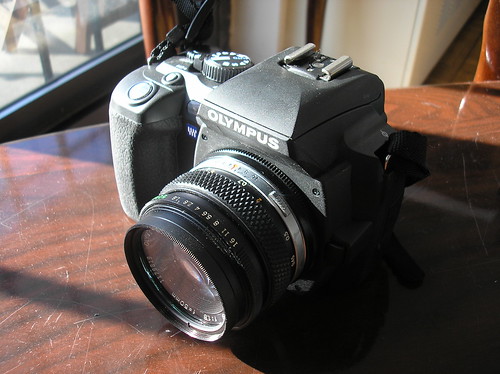
Picture credit: David Reeves
Simple adapters are inadequate if the lens you're adapting needs to be controlled by the camera to work properly. Modern autofocus lenses, for instance, may still have a manual focus mode (possibly without even a distance scale), but they usually don't have a control on the lens to set aperture. To set the aperture to anything other than wide open, therefore, you need to attach the lens to a camera of its native type, select the aperture you want, press the depth-of-field-preview button to make the lens stop down, then remove the lens while still holding the button, so it stays at that setting. This is not very practical.
If you're just putting old all-manual lenses on new cameras, though, these sorts of problems don't arise. The lens controls are all on the lens, so it'll work as it did before.
